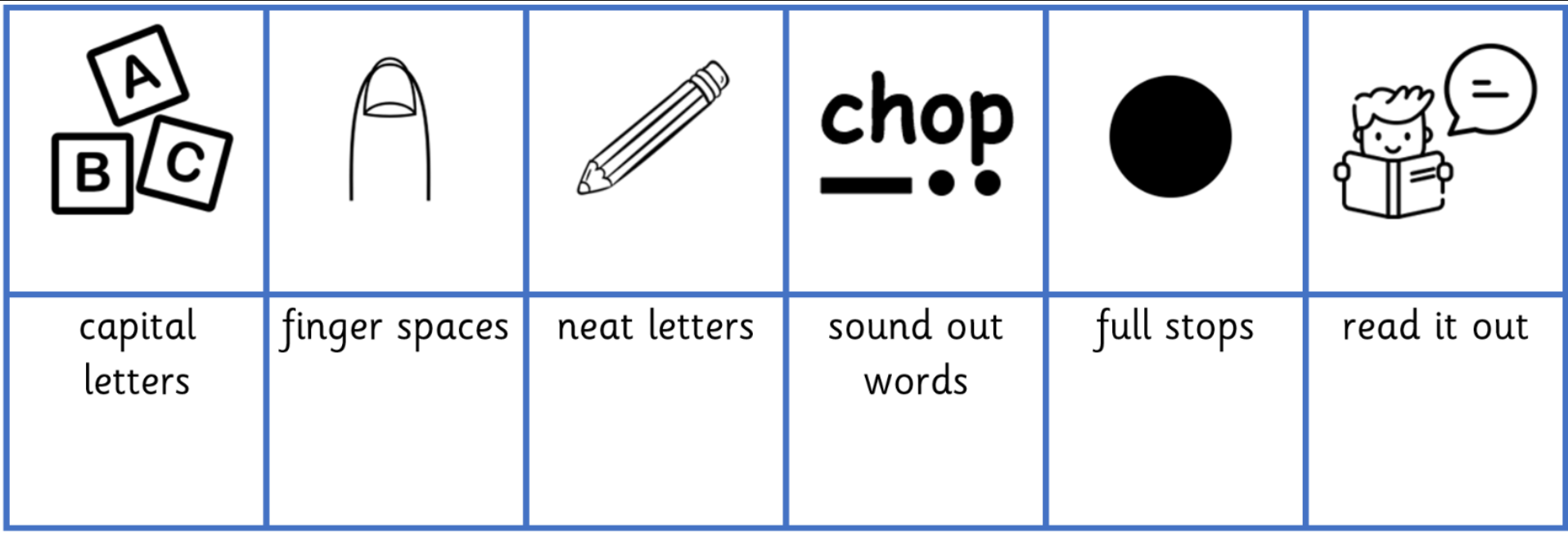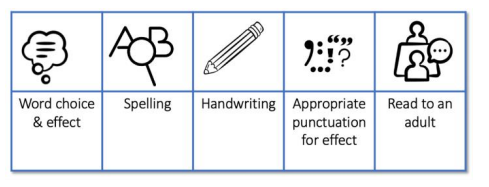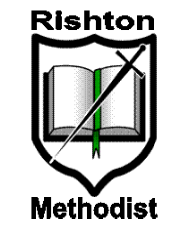Writing
At Rishton Methodist School we strive for excellence and that through a culture of guidance, support and intervention, pupils will develop and reach their greatest potential in writing. All children at Rishton Methodist deserve the opportunity to develop as independent, confident and successful writers, with high aspirations, who know how to make a positive contribution to their community and the wider society.
It is our belief that every child should have the right to express themselves through their writing and spoken language in a clear, confident and progressive way. Through research and evidence-based approaches, staff will be able to guide and lead pupils effectively. The values, intent, implementation and impact of this policy are outlined below.
We cultivate a love of Writing and communicating through vocabulary rich and high quality literature, using Ready Steady Write by Literacy Counts as our writing offer spine. By inspiring and developing an appreciation of our rich and varied literary heritage and providing meaningful and exciting provocations to write, we develop a habit of writing widely and often. We recognise the importance of nurturing a culture where children take pride in their Writing; can write clearly and accurately and adapt their language and style for a range of contexts.
Curriculum Design
Our writing curriculum empowers teachers to provide high-quality teaching of writing through high-quality literature. The detailed units of work centre on engaging, vocabulary-rich texts, with a wealth of writing opportunities within and across the curriculum. They provide:
-
Clear sequential Episodes of Learning
- Vocabulary learning and contextualised spelling, grammar and punctuation
- Wider reading for the wider curriculum
- Example Texts linked to writing outcomes
- A wealth of supporting resource
Our English curriculum is developed around a sequence of high quality age-appropriate texts, using Literacy Count’s Ready Steady Write units of learning. We use each book to create opportunities to:
- develop grammar and punctuation knowledge and understanding to use and apply across the wider curriculum, through sentence accuracy sessions;
- explore the Writing structure and features of different genres, identifying the purpose and audience;
- plan and write an initial piece of Writing with a clear context and purpose before evaluating the effectiveness of Writing by editing and redrafting.
Building on this foundation, we teach literacy using a range of strategies which include:
- Group Discussion – Children discuss and interrogate new ideas in a small group or whole class setting. They listen to and value each other’s ideas whilst taking on board feedback so as to improve their own explanations.
- Partner Talk – Children work in partners to discuss their ideas. They are able to explain their ideas about texts they have read and prepare their ideas before they write.
- Questioning – Teachers use a range of questioning strategies to establish children’s current understanding and develop their learning.
- Modelled Writing – Teachers model Writing and editing to demonstrate the high expectations they have. They verbally ‘think aloud’ in order to make the Writing process explicit and provide a rich and varied vocabulary for the children to utilise in their own work. This happens daily, through sentence accuracy
- Shared Writing – Teachers use the ideas from the children to create shared pieces of Writing. This enables the children to see the Writing process in action as well as having pride and ownership over the finished piece.
- Editing – All children are signposted to regular opportunities for reviewing and editing their own and the work of others.
- Working walls – Teachers and children regularly update working walls to ensure learning is documented within a unit of work. Class teachers ensure that the Writing process is clearly evident on working walls, with modelled examples being available to all pupils as the sequence of lessons develops.
Sentence Accuracy
Daily Sentence Accuracy is a vital element of our writing curriculum and encompasses word, sentence, and punctuation from the statutory National Curriculum programme of study for writing and Appendix 2 (Vocabulary, grammar and punctuation). Children must demonstrate using these skills across a range of writing to achieve end of year standards. This daily practice also helps build fluency and stamina for writing.
Within our sentence accuracy sessions, it is important children check their work for errors and the Sentence Accuracy Check enables children to do this. Children benefit from regular daily modelling of its use by the teacher. It is important to demonstrate how to make additions, revisions and proof-read work.
EYFS and Key Stage One Sentence Accuracy Checker:

Two Sentence Accuracy Checker:

When modelling Sentence Accuracy, staff always indicate grammatical features by underlining in one colour and circling the punctuation marks in another.
Assessment
Teachers draw upon observations and continuous assessment to ensure children are stretched and challenged and to identify those children who may need additional support. Formative assessment of Writing is completed through teachers’ daily feedback to inform future planning. Teachers use the children’s everyday writing and adapt models and input to meet their current needs. Teachers also complete a Reflecting on Unit outcomes document after each half termly unit, to identify next steps and the subsequent units are amended to include these focuses. Daily sentence accuracy work is carefully monitored to ensure children are constructing sentences both coherently and accurately. Termly staff meetings allow for whole school moderation of writing to deepen understanding of standards. Alongside this, children’s outcomes are tracked via the Sonar assessment tracker software.
Monitoring
To ensure this policy is effective, it will be regularly monitored and evaluated. Following an annual review, any amendments will be made to the policy and everyone informed.
Update March 2025
